How potatoes from Lower Saxony become ‘Snack Pata’ crisps from Lombardy.
A nail-biting crime thriller – now for some crisps! Nice and cosy on the sofa – fetch the crisps! With an aperitif, at a party, a quick snack… it’s time for some crisps! Remo Gobbi set up his ‘Snack Pata’ company to make the product everyone loves in the city of Medole in Lombardy in 1981. The potato crisps manufacturer grew rapidly and soon moved to Castiglione della Stiviere, not far from Lake Garda. Over 300 employees work here today to produce crisps and snacks. What are they made from? From potatoes grown in Lower Saxony. Time for a logistics chain that can really deliver.
It starts in the fields of the Sandering estate in Helmsloh in the district of Diepholz, situated more or less midway between Bremen and Osnabrück. The potato harvest is in full swing here. Operations manager Marco Süllow keeps an eye on everything: first the automated sorting system and then busy hands to weed out damaged tubers and plant parts. The agribusiness can store 25,000 tons of potatoes on the farm at 7 degrees Celsius. Today, however, potatoes of the Lady Rosetta variety are being loaded directly into big bags, each weighing one ton, and onto the truck.
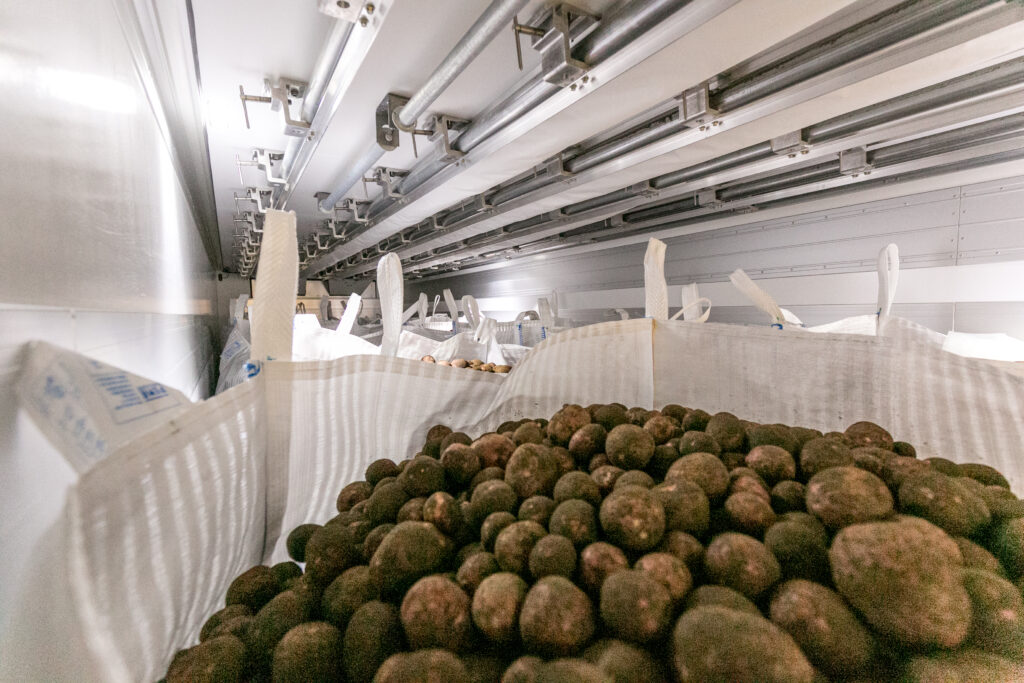
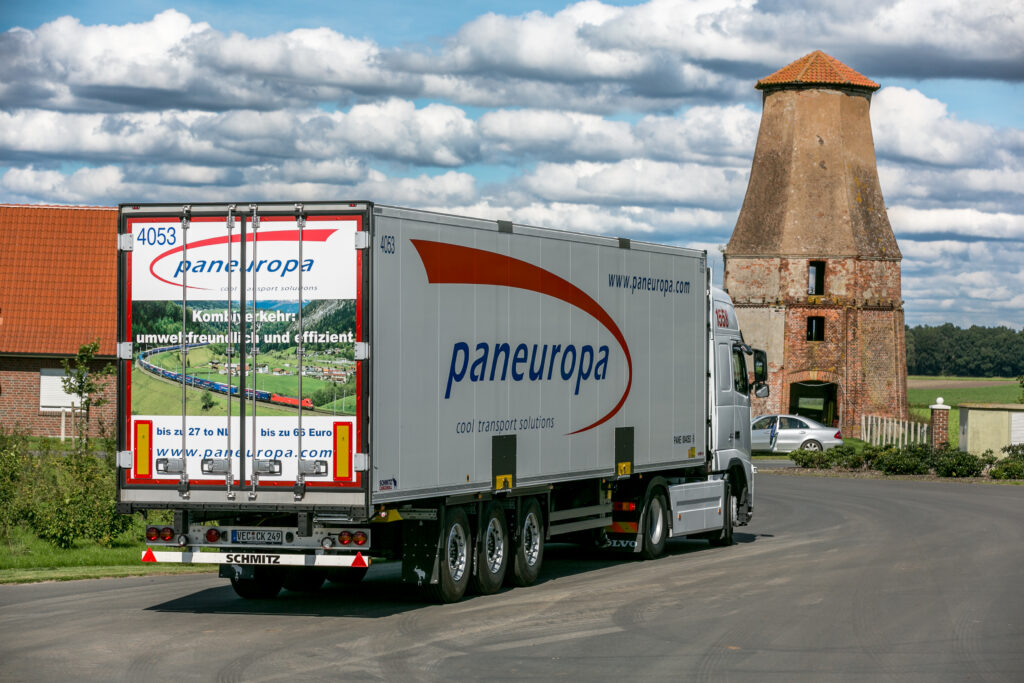
The customer is agricultural supplier Friedrich Fangmeier, an international specialist in potatoes for the production of potato chips whose export business extends as far as southeast Asia. The company purchases around 200,000 tons of chip potatoes from growers around Diepholz. This would equate to 8,000 truckloads if transported by road. Today’s route to Snack Pata crosses the Alps to Castiglione della Stiviere. If possible, the wholesaler prefers to use intermodal transport: “As we are also active in the field of renewable energies, the fact that we use sustainable methods of transport is seen as an added bonus by our customers.”
Since 2010 we have saved around 700 tons of CO2 by using CT.
Friedrich Fangmeier Agrarhandel
80 per cent of shipments by Combined Transport
The transport partner of Fangmeier is Paneuropa Rösch, based in Bakum. The company uses Combined Transport (CT) for approximately 80 per cent of its shipments. “Food shipping accounts for 15 per cent of this,” says Paneuropa export manager Mario Störmer: Paneuropa moves ham, frozen pizza and even cornflakes by rail. In total, the company operates up to 22 of its own complete trains every week. It also uses open trains in the Kombiverkehr KG network. The forwarder has 90 of its own semitrailer tractors, which form the backbone of the company. One of the vehicles transports the potatoes from Fangmeier in a refrigerated trailer over a distance of 80 km to the terminal operated by Roland Umschlagsgesellschaft für kombinierten Güterverkehr in the Bremen freight village (GVZ).
Four tons more payload are obviously of benefit to us.
Mario Störmer, export manager, Paneuropa Rösch
12 degrees
…is the optimal temperature for transporting potatoes.
It’s onto the railway now…
…at the Roland CT terminal in the Bremen freight village (GVZ). The terminal handles 100,000 transport units every year, with around 100,000 containers on top of this – and there’s still room for growth, according to managing partner Christoph Holtkemper. The Roland terminal provides rail links with the seaports of Bremerhaven, Hamburg and Wilhelmshaven as well as hinterland services to southern Germany, Switzerland and Italy. The potatoes from Lower Saxony also take the route to the south: the crane operator at the terminal takes a few minutes to load the refrigerated trailer onto the company’s own block train. Paneuropa runs this service eight times a week together with Bremen-based Spedition Terra and it is operated by CT specialist Kombiverkehr. Train 42179 departs from Bremen at 20.00 hours.
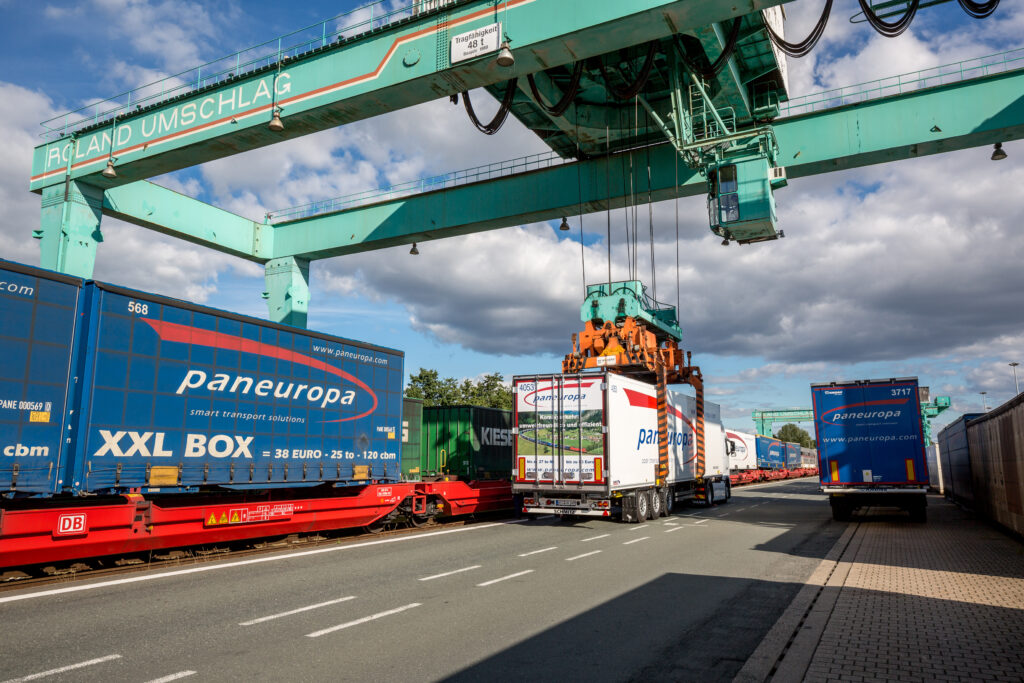
The benefits of CT have already arrived in the container sector – but there is still some potential in continental transport.
Christoph Holtkemper, managing partner of Roland Umschlagsgesellschaft für kombinierten Güterverkehr
Bremen-Munich overnight: after 750 kilometres the train arrives in Munich the following morning at 9.30. Train driver changeover: Maximilian Saller from the Munich company Lokomotion takes over the train and carries out the departure checks.
Transalpine railway – a case for operator Kombiverkehr and the rail traction providers Lokomotion and Rail Traction Company
Lokomotion is the rail traction provider that will pull the train to the Italian border on behalf of Kombiverkehr. At present, Kombiverkehr provides around 260 trains a week for forwarders between Germany and Italy, most of them via the Brenner Pass. This route was used to transport around 230,000 truck consignments in 2020 alone; measured by total volume, almost every fourth consignment took the Brenner crossing.
Saller starts up the engine at around 12.00. Two locomotives with a combined horsepower of nearly 14,000 take on the job to ensure that the train and its 32 wagon lengths cope with the steep alpine ascents. The train manages an average speed of 110 km/h with a laden weight of 837 tons and a tractive force of 300 kilonewtons. The train meets a few oncoming mainline and regional trains as it travels through the Alpine foothills, but at least twice as many freight trains.
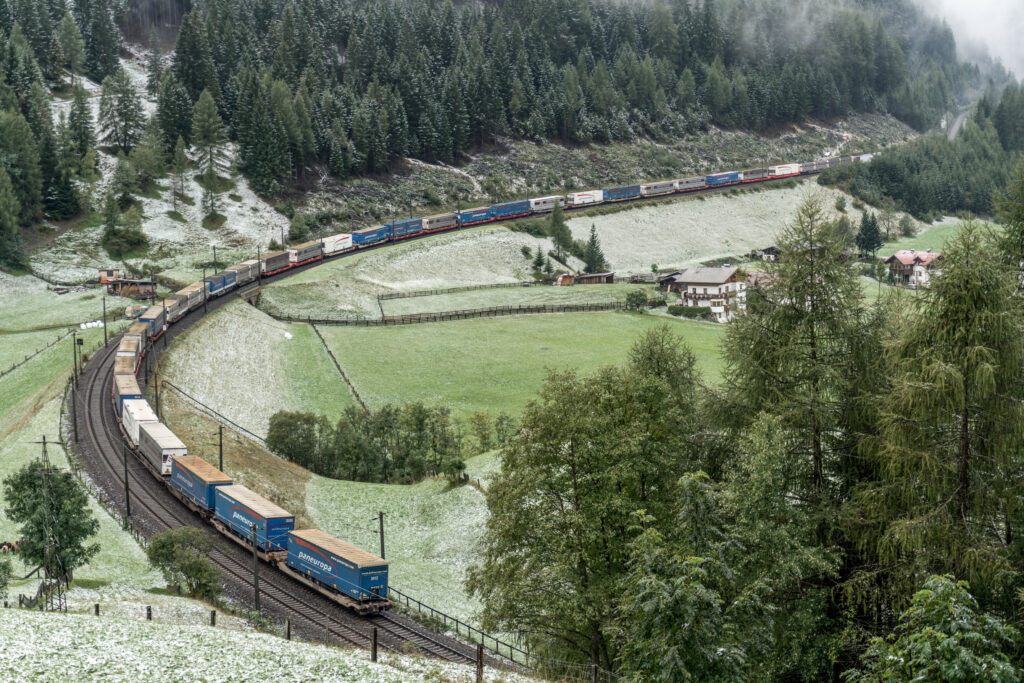
With the station in Kufstein in sight, train driver Saller takes his tablet out of the bag: the digital timetable, known as “Muster” (“sample”) in Austria, provides for a total journey time of 1:26 hours from Kufstein to the Brenner Pass. And that’s how long it will take: 15:15, light snowfall on the Brenner Pass. Train driver Saller switches over to the Italian current collector and the Italian track control system, and the door of the locomotive opens – “Ciao!” says the Italian colleague from partner company Rail Traction Company, who will take over the train from here. Train 42179 reaches its preliminary destination, the Interporto Verona Quadrante Europa terminal, at 20.00.
A journey time of 21 to 23 hours from Bremen to Verona is possible provided that there is adherence to the collection times at the transfer points, which in turn ensures that tracks are available for the onward journey.
Maximilian Saller, train driver and sales representative at Lokomotion
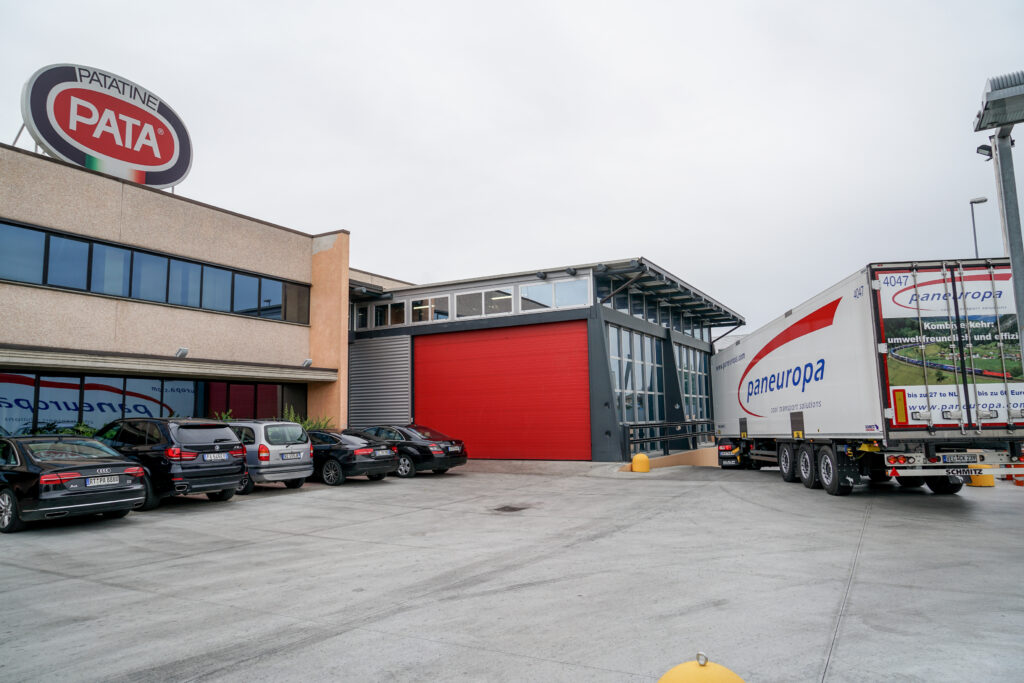
Fast final leg to Pata Snack
A Paneuropa lorry is back the next morning, ready to take the trailer from Germany to the yard at Pata in Castiglione delle Stiviere, some 40 kilometres away. It is weighed first, a sample is taken and it is then unloaded. The Pata employees are familiar with the routine: around 25 tons of Lower Saxon potatoes roll out of the sacks and are distributed into large plastic crates. They are then washed, peeled, cut into discs, fried in hot oil at 150 degrees, salted and packed. Snack Pata processes 300 tons of potatoes into 100 tons of crisps here every day.
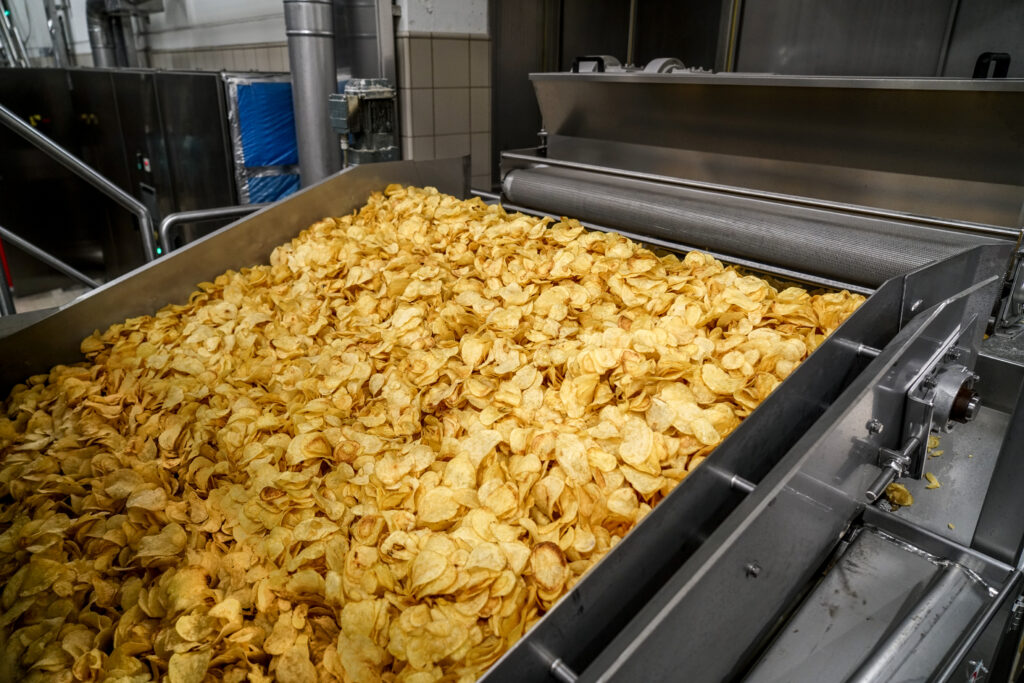
And where can you buy these delicious delicacies? In supermarkets, at petrol stations and of course at catering outlets.
“Una bella storia Italia” is one of the slogans of Snack Pata, made possible by logistics made in Germany. Bella Italia, buona logistica – it can be this simple.
Supply chain: the participants
- Hof Sandering (Helmsloh) delivers around 15,000 tons of chip potatoes annually to
- Friedrich Fangmeier Agrarhandel (Diepholz), who markets the potatoes to customers worldwide.
- Paneuropa Rösch (Bakum) arranges shipment by Combined Transport (CT): the first and final legs by truck and the main leg by rail. The company relies on the services of
- CT operator Kombiverkehr of Frankfurt.
- Depending on the route, the traction for the trains is provided by DB Cargo AG or
- Lokomotion of Munich
- and in other countries Rail Traction Company and Mercitalia Rail.

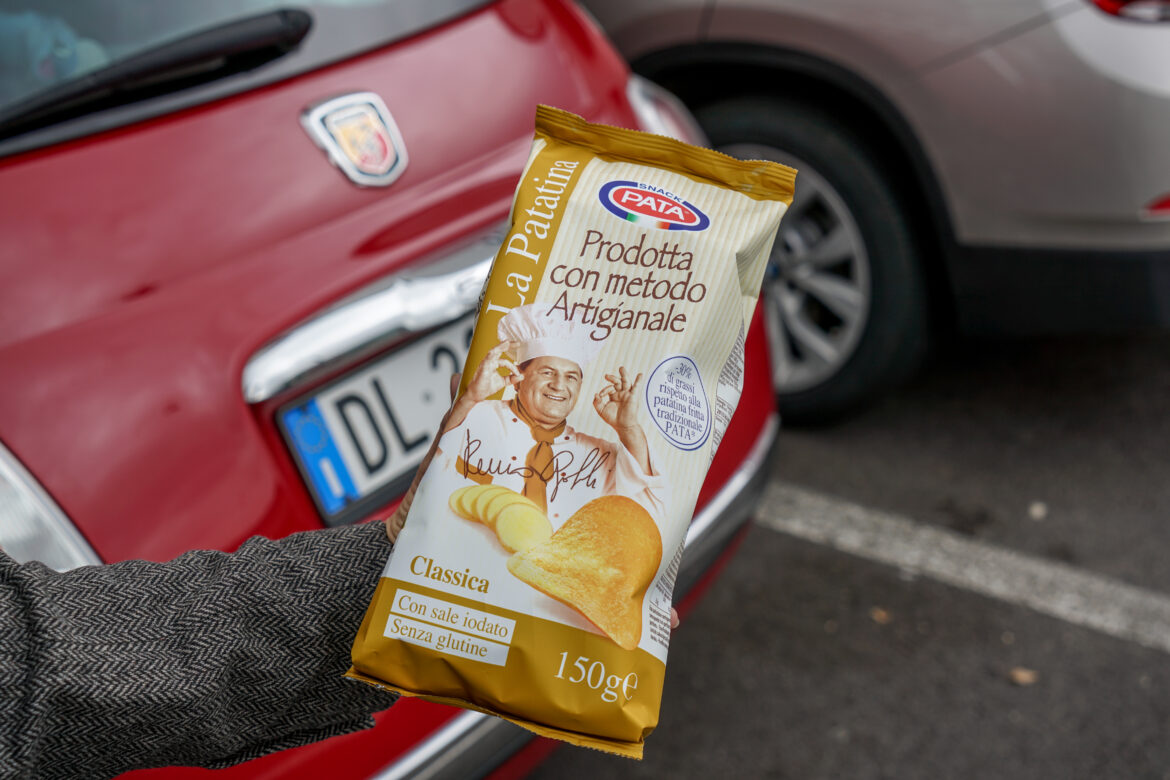
Comments are closed.